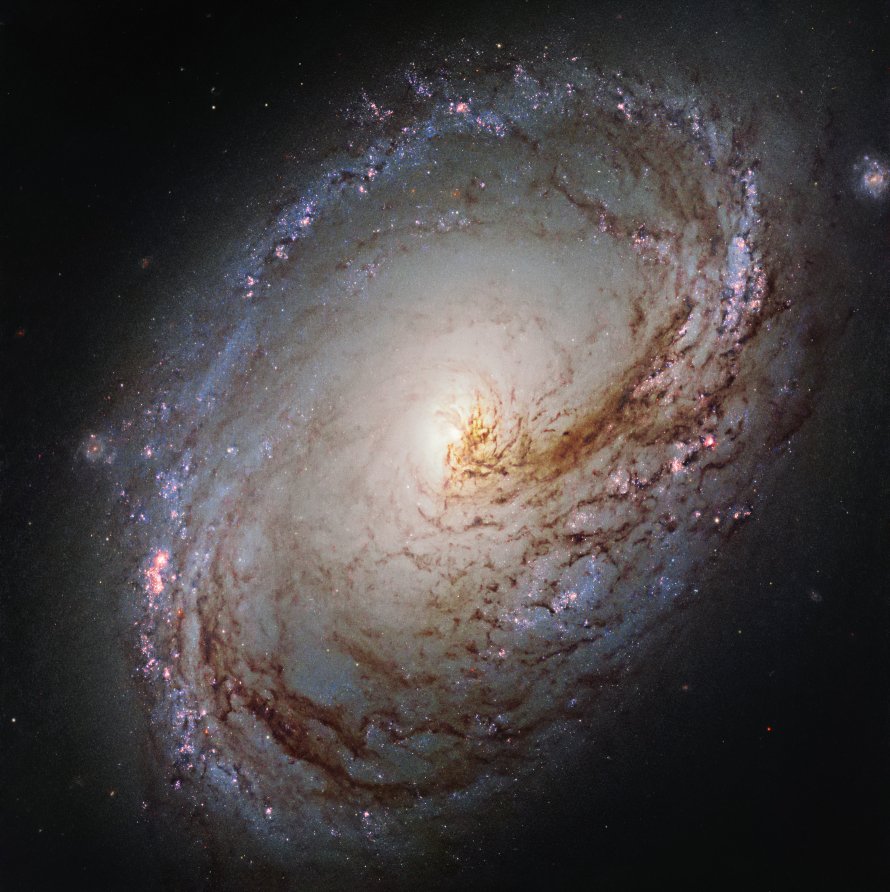M96 (NGC 3368)
Messier 96 (NGC 3368) is a spiral galaxy located in the constellation Leo in the Leo I Group of galaxies. M96 is 31000000 light years away from Earth.
M96 is best viewed during early spring, is magnitude 10, and can be viewed with small telescope. M96 is 7.6' x 5.2' in apparent size. For reference, the full moon is 30'.
Observing difficulty: Hard
- Name:
- Type:
- spiral galaxy
- Constellation:
- Leo
- NGC or IC:
- NGC 3368
- Magnitude:
- 10
- Viewing:
- small telescope
- Size:
- 7.6' x 5.2'
- Distance (light years):
- 31000000 LY
- RA:
- 10h 46.7m
- Dec:
- 11 49'
- Season:
- early spring
- Galaxy group:
- Leo I Group
- Messier Marathon #:
- 29
* The naked eye can see up to magnitude ~7-8 objects under ideal dark sky conditions.
Unveiling the Intermediate Spiral Galaxy
Messier 96, or M96, also catalogued as NGC 3368, is an intermediate spiral galaxy located in the constellation Leo. Discovered by Pierre Mechain in 1781 and subsequently catalogued by Charles Messier, M96 has captivated the attention of astronomers and space enthusiasts due to its striking appearance and fascinating attributes.
Characteristics of Messier 96
M96 is part of the Leo I or M96 Group, which includes other famous members such as M95 and M105. The galaxy spans approximately 100,000 light-years across, similar to our own Milky Way Galaxy. M96 has a peculiar asymmetric appearance, particularly in its arm structure, thought to be due to gravitational interactions with its nearby galactic neighbors.
The galaxy?s core is also of interest, hosting a weakly active supermassive black hole, which has been a subject of research to understand better the nature of these cosmic phenomena.
Magnitude and Distance
The galaxy is situated at a distance of about 31 million light-years from the Earth. M96 has an apparent magnitude of around 9.2, making it slightly brighter than its neighboring galaxies in the Leo I group. However, its faintness means it is not visible to the naked eye but can be observed through binoculars or a small telescope.
Finding and Observing Messier 96
Messier 96 is found within the constellation Leo. It's located approximately 2.5 degrees east and slightly north of the star Epsilon Leonis. Locating Leo in the night sky is relatively straightforward due to its recognizable sickle-shaped asterism, resembling a backward question mark or a lion?s mane, with the bright star Regulus marking the base of the question mark.
While not visible to the unaided eye, a small to medium-sized telescope under dark skies will reveal M96 as a diffuse, oval-shaped patch of light with a bright core. Larger telescopes will start to bring out the galaxy's asymmetric spiral arms and other details. It's a rewarding sight, especially when the observer appreciates the tremendous distance that this light has traveled to reach their telescope.
The peculiar asymmetry of Messier 96 and its place within a small group of galaxies that includes other Messier objects, makes it an appealing target for amateur astronomers and a subject of significant scientific interest. Its study, and that of galaxies like it, continues to contribute to our expanding knowledge of the universe and the intricate dance of galaxies within it.



